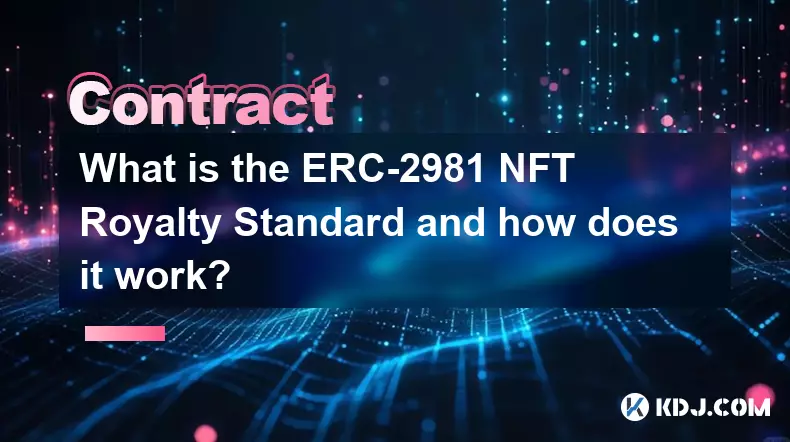-
 bitcoin
bitcoin $95203.028270 USD
-4.12% -
 ethereum
ethereum $3151.730711 USD
-1.61% -
 tether
tether $0.999170 USD
-0.04% -
 xrp
xrp $2.273039 USD
-1.55% -
 bnb
bnb $924.288432 USD
0.14% -
 solana
solana $141.112899 USD
-2.02% -
 usd-coin
usd-coin $0.999964 USD
0.02% -
 tron
tron $0.293976 USD
0.82% -
 dogecoin
dogecoin $0.160772 USD
-1.84% -
 cardano
cardano $0.506357 USD
-3.90% -
 hyperliquid
hyperliquid $37.900515 USD
0.03% -
 zcash
zcash $644.358451 USD
26.66% -
 chainlink
chainlink $14.062007 USD
-2.60% -
 bitcoin-cash
bitcoin-cash $484.381072 USD
-5.12% -
 unus-sed-leo
unus-sed-leo $9.199874 USD
0.27%
How does a smart contract store data and what is the difference between storage, memory, and calldata?
Smart contracts store data permanently in blockchain storage, a key-value system where state variables persist across transactions and are replicated across all nodes.
Nov 14, 2025 at 03:20 pm

How Smart Contracts Store Data on the Blockchain
1. Smart contracts on blockchain platforms like Ethereum use a decentralized ledger to maintain state changes and store data permanently. Every time a contract function modifies a variable, that change is recorded across all nodes in the network. This ensures transparency and immutability. The data stored within a smart contract persists beyond individual transactions and remains accessible as long as the contract exists.
2. Data storage in smart contracts occurs through variables declared at the contract level. These variables are saved in what is known as 'storage,' which is part of the Ethereum Virtual Machine (EVM) architecture. Each contract has its own dedicated storage space, which is persistent and expensive to modify due to gas costs. When a transaction updates a state variable, miners validate the change and write it into the blockchain's state trie.
3. The EVM treats storage as a large key-value store where each slot holds 32 bytes. Variables are packed efficiently to minimize space usage. For example, multiple boolean values can be stored within a single slot. Developers must be cautious about how they declare variables because inefficient packing increases gas consumption.
4. Reading from and writing to storage incurs different gas costs. Writing operations cost significantly more than reading, and initializing a non-zero value is more expensive than setting it to zero. Once data is written, it cannot be deleted entirely; instead, setting a value to zero refunds some gas, incentivizing developers to clean up unused data.
Differences Between Storage, Memory, and Calldata
1. Storage refers to the permanent data area associated with a contract, where state variables are kept. It is persistent across function calls and transactions. Any variable declared outside functions—such as uint balance or mapping(address => bool) whitelist—resides in storage by default. Accessing storage is slow and costly due to its permanence and global replication.
2. Memory is a temporary space used for holding data during function execution. It is erased after the function call ends and is ideal for local variables and complex types like arrays or structs used within a function. Unlike storage, memory is cheaper to access but does not retain data between calls. Strings, dynamic arrays, and function arguments often reside here unless explicitly assigned otherwise.
3. Calldata is a special read-only area where function arguments are stored, particularly for external function calls. It avoids copying data into memory, making it efficient for large inputs such as byte arrays passed to public or external functions. Since calldata cannot be modified, it is suitable only for input parameters that do not need alteration during execution.
4. The location keyword in Solidity—such as storage, memory, or calldata—must be specified when dealing with reference types like arrays, strings, and structs. Misuse can lead to unnecessary copying, increased gas fees, or runtime errors. For instance, passing a large array to a function without using calldata unnecessarily loads it into memory, increasing computational overhead.
Data Location Implications in Function Design
1. When designing functions, choosing the correct data location affects both performance and cost. External functions accepting large payloads should declare parameters as calldata to avoid memory allocation. This optimization reduces gas usage and improves scalability, especially for contracts handling bulk operations like token transfers or batch registrations.
2. Internal and private functions cannot use calldata since they are not called externally. Instead, they rely on memory or storage depending on whether the data needs to persist. Local computation involving temporary structures benefits from memory’s speed while avoiding the high cost of storage writes.
3. Assigning reference types incorrectly can create unintended behavior. Declaring a local variable as storage and assigning it to a state variable creates an alias rather than a copy. Modifying the local variable will directly alter the original state, which may be desirable in some cases but dangerous if done unintentionally.
4. Complex operations such as sorting or filtering should operate on memory copies unless direct state manipulation is required. Creating a memory snapshot of a storage array allows safe transformation without risking inconsistent state changes mid-execution. After processing, results can be written back to storage if necessary.
Frequently Asked Questions
What happens if I try to modify data in calldata?Attempting to modify data located in calldata results in a compilation error. Calldata is strictly read-only, designed to hold input parameters for external function calls without allowing mutation during execution.
Can memory data be accessed by other functions in the same transaction?No, memory is isolated to the executing function. Even within the same transaction, each function call gets its own fresh memory space. However, state changes made to storage during one function call are visible to subsequent calls in the same transaction.
Why can't I return a value directly from storage without copying it to memory?When returning complex types like arrays or strings, the EVM requires them to be placed in memory before being included in the response. Storage cannot be directly serialized for return values; thus, a temporary copy in memory is necessary even if the source is a state variable.
Is there a limit to how much data I can store in calldata?While there is no fixed size limit defined in the EVM specification, practical constraints come from block gas limits. Excessively large calldata can make transactions too expensive to include in a block, effectively limiting usable size based on current network conditions and gas prices.
Disclaimer:info@kdj.com
The information provided is not trading advice. kdj.com does not assume any responsibility for any investments made based on the information provided in this article. Cryptocurrencies are highly volatile and it is highly recommended that you invest with caution after thorough research!
If you believe that the content used on this website infringes your copyright, please contact us immediately (info@kdj.com) and we will delete it promptly.
- Decoding the Crypto Crystal Ball: Will Apeing Outpace XRP and BNB in 2025?
- 2025-11-15 12:25:02
- HBAR, Zero Knowledge, and the Privacy Revolution: What's the Smart Money Doing?
- 2025-11-15 11:40:02
- Crypto Presales Face-Off: Is Digitap ($TAP) Really Toppling BlockDAG?
- 2025-11-15 11:35:01
- Tokenization, 24/7 Markets, and Vlad Tenev: The Future of Finance?
- 2025-11-15 11:30:01
- Bull Market Bonanza: Crypto Presales and Explosive Growth Opportunities
- 2025-11-15 11:25:01
- Crypto Carnage: Navigating Selling and Liquidations in a Wild Market
- 2025-11-14 16:50:01
Related knowledge

What is a Denial of Service (DoS) attack in a smart contract and what are its common forms?
Nov 10,2025 at 05:20am
Understanding Denial of Service in Smart Contracts1. A Denial of Service (DoS) attack in the context of smart contracts refers to a scenario where a m...

What is a cryptographic nonce used for in transaction signing?
Nov 11,2025 at 05:59am
Understanding Cryptographic Nonces in Blockchain Transactions1. A cryptographic nonce is a random or pseudo-random number used only once in the contex...

How does inheritance work in Solidity smart contracts?
Nov 11,2025 at 10:40pm
Inheritance in Solidity: Building Modular Smart Contracts1. Inheritance in Solidity allows one contract to adopt the properties and functions of anoth...

What is the difference between an Externally Owned Account (EOA) and a Contract Account?
Nov 13,2025 at 04:00am
Understanding Externally Owned Accounts (EOA)1. An Externally Owned Account is controlled directly by a private key, which means only the holder of th...

What is the ERC-2981 NFT Royalty Standard and how does it work?
Nov 13,2025 at 05:39am
Understanding the ERC-2981 NFT Royalty Standard1. The ERC-2981 standard is a proposed Ethereum Request for Comment that introduces a royalty mechanism...

What is a Minimal Proxy Contract (EIP-1167) and how does it save gas on deployment?
Nov 12,2025 at 11:39am
What is a Minimal Proxy Contract (EIP-1167)?1. A Minimal Proxy Contract, standardized under Ethereum Improvement Proposal (EIP) 1167, is a lightweight...

What is a Denial of Service (DoS) attack in a smart contract and what are its common forms?
Nov 10,2025 at 05:20am
Understanding Denial of Service in Smart Contracts1. A Denial of Service (DoS) attack in the context of smart contracts refers to a scenario where a m...

What is a cryptographic nonce used for in transaction signing?
Nov 11,2025 at 05:59am
Understanding Cryptographic Nonces in Blockchain Transactions1. A cryptographic nonce is a random or pseudo-random number used only once in the contex...

How does inheritance work in Solidity smart contracts?
Nov 11,2025 at 10:40pm
Inheritance in Solidity: Building Modular Smart Contracts1. Inheritance in Solidity allows one contract to adopt the properties and functions of anoth...

What is the difference between an Externally Owned Account (EOA) and a Contract Account?
Nov 13,2025 at 04:00am
Understanding Externally Owned Accounts (EOA)1. An Externally Owned Account is controlled directly by a private key, which means only the holder of th...

What is the ERC-2981 NFT Royalty Standard and how does it work?
Nov 13,2025 at 05:39am
Understanding the ERC-2981 NFT Royalty Standard1. The ERC-2981 standard is a proposed Ethereum Request for Comment that introduces a royalty mechanism...

What is a Minimal Proxy Contract (EIP-1167) and how does it save gas on deployment?
Nov 12,2025 at 11:39am
What is a Minimal Proxy Contract (EIP-1167)?1. A Minimal Proxy Contract, standardized under Ethereum Improvement Proposal (EIP) 1167, is a lightweight...
See all articles









































































